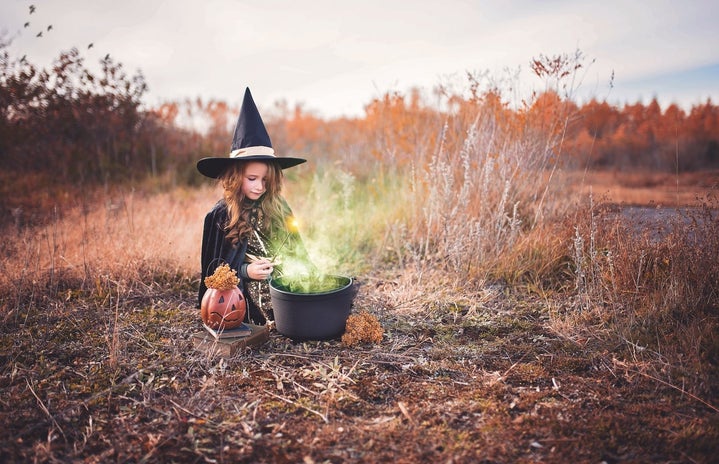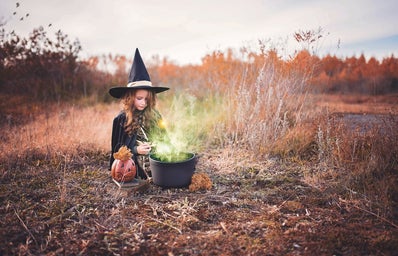By Hannah van Duursen
TRIGGER WARNING: Discussions of 9/11, mass shootings, serial killers, war victims/the Holocaust and the COVID-19 Pandemic discussed in this article.
I’ll be the first to admit Halloween is one of, if not the best, time of year. Who doesn’t love an excuse to dress up and gorge yourself on candy while watching horror movies (or if you’re like me, sticking to the tamer side of things with some good-old-fashioned Adams Family)? I swear my Halloween decorations get crazier as each year passes and I have no regrets about blowing my paycheck on a giant pumpkin to stick in my front yard. But before we can all dive into the spooky fun let’s talk about something serious.
Cultural appropriation: you’ve probably heard this word circling the news the past few years and you’ll see it again this year. Cultural appropriation, put in its most simplest terms, occurs when a majority group uses and/or adopts aspects and elements of another culture in a disrespectful, exploitative, and/or stereotypical way. If you’re here, reading this, it means you’ve taken this issue to heart and want to make sure your costume is both fashionable and fair. Thank you!
We’ll talk about more than just cultural appropriation in this article. It’s disturbing what people have come up with so buckle in for a wild ride as we learn the do’s and the don’ts for this (and really all) Halloweens!
- Avoid Racial And Ethnic Stereotypes.
Out of everything you’ve heard about cultural appropriation, this is probably the most commonly discussed issue. Every year, stores fill to the brim with costumes that cross this line. From Native Americans to mariachi bands, any costume that oversimplifies or pokes fun at a culture is a no-no on Halloween. This can include:
- Dia de Los Muertos skeleton costumes
- A Middle Eastern terrorist
- A hula dancer
- A mariachi band
- Anything with a sombrero or pancho
- ANYTHING WITH BLACKFACE, YELLOWFACE OR BROWNFACE
- What does that mean? Blackface, yellowface, and brownface all occur when you are painting/darkening your skin a different color to emulate the skin tone of a different race. Don’t do it.
- A roma person
- A geisha
NOTE: This includes styling your hair to emulate that of a different race. Example? If you’re not black, don’t wear an afro or dreadlocks.
- Avoid Costumes Making Fun Of Mental Illness Or Disability.
We all know the classic, Hollywood image of a man in a straight jacket, raving and writhing as he’s carted away. While this image on its own is problematic (it portrays those who deal with mental illness as insane, dangerous, and unstable) Halloween adds its own spin to it.
Avoid straightjackets or other props associated with institutionalized groups of people. Not only does it make light of a very serious and often painful experience, but it adds to the harmful stereotype that people with mental illness are “crazy”. Mental illness affects many people, especially today in the aftermath of the pandemic. Costumes about mental illness add to the stereotypes that mentally ill people are “insane”. This can deter people from seeking help as they don’t want to be associated with the stereotype. So just don’t do it.
Furthermore, don’t wear costumes that emulate people with Down Syndrome, autism, or other disabilities. These people are just that, people. People with lives full of love, loss, victory, defeat, and experience just like everyone else. Don’t poke fun at their experience through a Halloween costume. Be a butterfly or a ketchup bottle, not a douche.
- Avoid transphobic costumes.
You may have heard of the “Call Me Caitlyn” costume that circulated through costume stores in 2015. The costume, labeled unisex, was the classy white corset and shorts worn by transgender trend setter Caitlyn Jenner on her Vanity Fair cover. It included a wig.
Retailers claimed the costume to be a homage to Caitlyn yet the costume was stored in the “male humor costume” areas in many retailers and descriptions often remarked on the laughs you may get out of your friends.
The transgender community is already facing immense backlash and violence from today’s social and political world. Costumes mocking them can be viewed as another weapon in this war on their community. It reduces a person, a human being, to a costume and pokes fun at the one thing that makes them “different”. By reducing and poking fun at Caitlyn, the costume, creator, and wearer reduced and poked at the transgender community.
It’s simple. Don’t turn an identity into a costume.
This example was limited to Caitlyn but there are many other ways costumes can be homophobic or transphobic. Good rules of thumb:
Don’t wear or create a gender costume that pokes fun at a gender that is not your own. Your little boy wants to be Wonder Woman? Great! Go for it! You’re little boy wants to dress up as the tranny granny costume? First off, it includes a slur and second off it pokes fun at transgender individuals. Don’t do it.
- A holocaust victim. Or really any victims of war.
Yes. People do this. And yes, it is wrong. Don’t dress up as a marginalized group of people that were subject to the most atrocious, inhumane, and violent circumstances known in our history. Just don’t do it.
- A National or Personal Tragedy
Avoid national tragedies for your Halloween costumes. If it’s harmed, killed, or devastated a nation or even just a group of people, don’t put it on. Examples?
Don’t dress as the Twin Towers that fell during 9/11. Don’t dress as an active shooter participating in a mass shooting.
Believe it or not, sites are selling Covid-19 costumes. The COVID-19 pandemic killed millions, devastated economies, and traumatized us all. For those reasons, amongst others, avoid dressing as this disaster for Halloween. Many of us are still coping with loss, dressing up as the cause helps no one.
Serial killers are another one. With the uptick in documentaries, novels, and shows centering around serial killers it can be tempting to dress up as your “favorite” one. Jeffery Dahmer is a common costume I’m sure we’ll be seeing a lot of this year. But not on you! Because you read this article.
Serial killers leave behind a trail of grief, trauma, and depression. Their actions devastat and destroy families and cause terror in many marginalized communities (take the previously mentioned Jeffery Dahmer who targeted communities of color and people in the LGBTQIA+ community). Dressing up as them pays a sort of homage to a person who wrecked communities and families. Don’t do it.
If it’s caused death or trauma, leave it in the closet. Or even better, don’t buy it.
- Costumes That Objectify Or Body-Shame.
If your costume objectifies a woman (a great example here) don’t wear it. The objectification and sexualization of women, especially women of color, in our society is an ongoing plague and these sorts of Halloween costumes don’t help. By wearing a garment like those above, you are reducing the category of women to that of an object to poke fun at. They are no longer human beings with thoughts and emotions but the butt of a very harmful joke.
Fat suits are another big no-no. Again, by wearing a fat costume, you are reducing a person to the subject of a joke because of their weight (something, by the way, they may not be able to even control due to medical reasons). People come in all shapes and sizes. Just because they look different from you does not mean you can make fun of them. People are people. Not costumes. Simple as that.
- An Unhoused Person
The “hobo” is a popular costume and we are here to say: nope not this year.
Whether it’s for you or for your child, don’t fall into the trap of the “hobo”. This costume takes an ongoing crisis that affects and kills millions of people, and that continues to worsen, and turns it (yet again) into a silly costume.
Don’t reduce a crisis to a costume.
So…….
You may be sitting there thinking “Well what can I dress up as then?” First, if this is your thought after reading this, take a moment and ask yourself why your costume needs to be based off of stereotypes, tragedies, the struggles of others, and/or racist, homophobic, and transphobic beliefs? Then peruse below.
There are so many things you can dress up as that won’t cause harm to others! Off the top of my head?
- Literally any Winnie the Pooh character. Who doesn’t love Piglet?
- A pretty butterfly! Make your own wings, get creative with makeup!
- An elf, orge, or other fantasy character. Admit it. We all love Legolas. Make those beautiful ears and get that long hair and go as a graceful elf this Halloween!
- Couples costume? Salt and Pepper shakers. Marceline and Princess Bubblegum. Will Turner and Elizabeth Swan. Nick Nelson and Charlie Spring.
- A Regency Era Duke or Duchess. We’ve all seen Bridgerton. We all want an excuse to wear those fabulous clothes. Here it is!
- Your favorite decade or food!
- A tasteful pun. Though maybe a little overdone, I have always loved Identity Theft. Though we must all remember it’s not a joke.
- Dwight from the Office.
I came up with those while just sitting here. None of them fit your fancy? Google. Responsibly. You’re sure to find something!
Halloween can be fun, if done right! In general, if it feels questionable, avoid it. Ask yourself these questions:
- Does your costume represent a different race or culture?
- Does your costume revolve around stereotypes of a different group of people?
- Does your costume celebrate or exploit characteristics of groups of people that aren’t readily accepted in everyday life? Also known as marginalized groups.
If the answer is yes to any of the above, put it back and try something else.
We all deserve the right to a safe, fun, and spooky Halloween and with a little forethought we can achieve that! Have fun this year, be safe, and enjoy the funky fun festivities!



